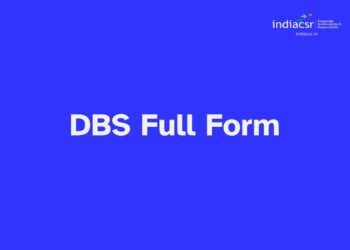Navigating Business with Break-Even Analysis
The full form of PEP is the Policy Enforcement Point. BEP stands for Break Even Point. In the realm of business, understanding and navigating financial standing is a formidable challenge. As companies strive to make informed decisions and secure their fiscal stability, one invaluable tool comes to the forefront: the Break Even Point (BEP).
Introduction to BEP
The Break Even Point (BEP) is a critical financial metric that represents the level of sales or production at which a business’s total revenues exactly equal its total costs, resulting in neither profit nor loss¹. It serves as a vital reference for businesses to assess financial viability and make informed decisions about pricing and production levels.
The Genesis of BEP
Historically, the concept of BEP has been integral to business operations, evolving over time to adapt to the changing landscapes of industry and commerce. Its origins can be traced back to the early days of industrialization, where maximizing efficiency and profitability were paramount.
The Role of BEP in Modern Business
Today, BEP is more relevant than ever. It aids businesses in setting realistic goals and assessing the potential impact of various scenarios on their financial performance. By examining the cost structure and pricing strategies, businesses can navigate through economic uncertainties with greater confidence.
Break-Even Analysis: The Strategic Tool
Break Even Analysis is a financial assessment tool used by businesses to determine the point at which total revenues equal total costs. This analytical technique helps businesses understand the relationship between fixed costs, variable costs, and revenue.
Fixed Costs: The Foundation
Fixed Costs are constant expenditures that do not fluctuate with production levels. They form the bedrock of any business operation, providing clarity on the financial groundwork.
Variable Costs: The Variable Factor
Variable costs, conversely, are the shape-shifters of business expenses. They fluctuate with production volume and are crucial for strategic decision-making.
The Benefits of BEP
The BEP offers numerous advantages:
- Profitability Analysis: It helps in determining the profitability of products or services.
- Pricing Decisions: BEP assists in setting the right price for products or services.
- Cost Control and Efficiency: It aids in managing costs and improving business efficiency.
- Sensitivity Analysis: BEP allows businesses to evaluate the sensitivity of their profits to changes in costs, prices, and output.
- Financial Planning and Budgeting: It is an essential part of financial planning and budgeting processes.
In conclusion, the Break Even Point stands as a testament to the resilience and adaptability of businesses. It is not just a figure on a chart; it is a beacon that guides companies through the stormy seas of the market, ensuring that they not only survive but thrive in their endeavors.
Importance of BEP
The break-even point is important because it helps companies determine how much they need to sell in order to cover their costs and start making a profit.
- To calculate the break-even point, you first need to determine the total fixed costs and the total variable costs associated with producing and selling a product or service. Fixed costs are those costs that do not change with the volume of production or sales, such as rent, salaries, and insurance. Variable costs are those costs that do change with the volume of production or sales, such as the cost of raw materials, labor, and energy.
- Once you have determined the fixed and variable costs, you can calculate the break-even point by dividing the total fixed costs by the difference between the price of the product or service and the variable cost per unit. This will give you the number of units that need to be sold in order to break even.
- For example, if a company has total fixed costs of Rs10,000 and a variable cost per unit of $2, and the company sells its products for Rs 5 per unit, the break-even point would be calculated as follows: BEP = Rs10,000 / (Rs5 – Rs2) = 1,000 units. This means that the company would need to sell 1,000 units in order to break even and start making a profit.
The break-even point is an important tool for businesses because it helps them understand how many units they need to sell in order to cover their costs and start making a profit. By understanding their break-even point, businesses can make better decisions about pricing, production levels, and other factors that can affect their profitability.


























